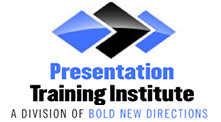When it comes to giving a presentation, your body language is equally important to your spoken words. Body language is a powerful tool that can greatly enhance the impact of your presentation. Nonverbal communication such as hand gestures, facial expressions, posture, and eye contact play a significant role in conveying your message and helping to connect with your audience. Let’s explore the importance of body language and how it can be used to engage the audience and create a more memorable experience.
Connect with the Audience
One of the key benefits of body language in presentations is that it helps to establish a connection with the audience. Nonverbal cues such as eye contact, smiling, head nods, and open gestures help to create a sense of rapport and can build trust with the audience. In turn, this makes them more receptive to your message. Furthermore, body language can convey credibility, sincerity, and authenticity, all of which aid in capturing audience attention and maintaining their interest throughout the presentation.
Emphasize Key Points
Body language is also useful for emphasizing key points in a presentation. Gestures, facial expressions, and body movements can help to add emphasis to important information, making those points more memorable for the audience. For example, using hand gestures to illustrate size or quantity can enhance clarity and make more of an impact. By incorporating body language into their presentation, speakers can create a more compelling experience that resonates with the audience.
Convey Confidence and Authority
Body language can also help to convey confidence and authority to the audience. When a speaker commands the stage with good posture, eye contact, and meaningful gestures, it communicates a speaker’s level of confidence and credibility. This can enhance the presenter’s overall impact, leading to a more successful and persuasive presentation.
Tips for Effective Body Language:
- Maintain good posture by sitting or standing up straight with your shoulders back and your head held high.
- Make eye contact with individual audience members throughout the presentation to establish a more personal connection.
- Use natural and expressive hand gestures to emphasize key points and illustrate concepts.
- Smile to appear more welcoming and authentic. A genuine smile goes a long way in making the audience feel comfortable and engaged.
Body language can greatly impact the overall effectiveness of your presentation. By using nonverbal cues such as gestures, facial expressions, posture, and eye contact, you present yourself as a more credible speaker and establish a more meaningful connection with your audience. If you want to learn more about how to become a better presenter, enroll in one of our presentation training courses. We can help you learn how to incorporate body language to communicate more effectively. Call today for more information about our selection of presentation training courses!
